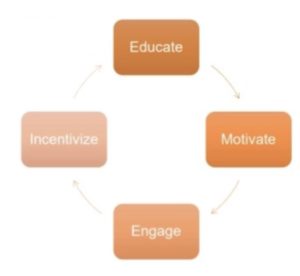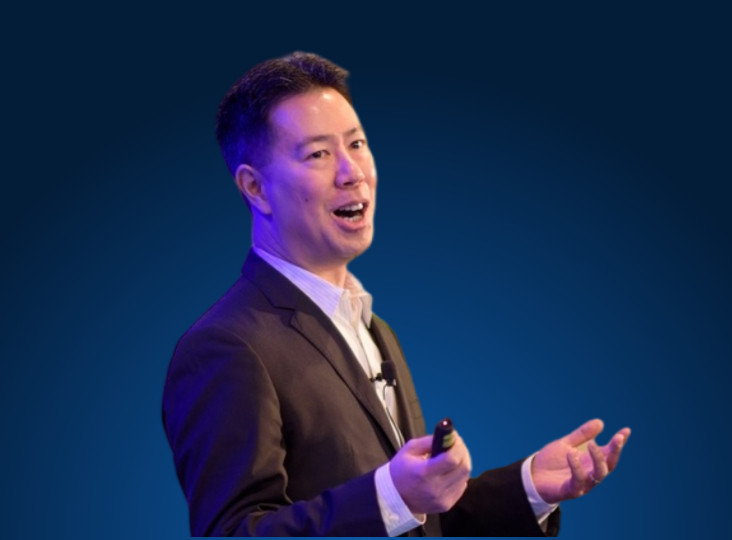How to establish a practical patient experience program using incentives
Tandigm Health, an insurance-owned, provider-led, clinically focused organization of nearly 170 independent primary care practices in Philadelphia, recently evaluated and implemented a patient experience program to educate, motivate, engage, and incentivize stakeholders.
 “Our leadership said this is the right thing to do for our patients. No other player in our market was doing this. Still, today, we are the only partner with an established patient experience program, says 2022 NRC Health Symposium speaker Jason B. Ruda, MS, CPXP, Experience Director of Tandigm Health.
“Our leadership said this is the right thing to do for our patients. No other player in our market was doing this. Still, today, we are the only partner with an established patient experience program, says 2022 NRC Health Symposium speaker Jason B. Ruda, MS, CPXP, Experience Director of Tandigm Health.
“We started to engage NRC Health and use more medical practice questions to focus on getting patient feedback to inform how these CAHPS measures will be improved. We’re also measured on improving and maintaining the health and wellness of our patients. We don’t just focus on the communication piece; we don’t just focus on the listening piece. We also focus on how we’re doing with improving and maintaining these clinical measures,” he says.
Tandigm Health’s catalyst for change was an increased CMS emphasis on patient experience, with weighted measures growing from 1.5x (2017) to 4x (2023). Here are some key takeaways from how they established a practical patient experience program using incentives.
Leverage your Patient Experience Champions through education and incentives. 
The biggest part of this program, Ruda says, was not just building the foundation in education, but also creating operational efficiencies in the practices for both the patient and practice experience. Tandigm started to work on huddles, same-day appointments, and medication excellence education related to reconciliation and adherence conversations.
Ruda said they allowed practices to determine which patient experience initiatives were pursued – the activities that made the most sense for their individual practice – so that if they wanted incentive dollars, they had to meet basic, intermediate, or advanced criteria. “Each criteria earned the practice a specific set of points. Those points relate to dollars; that’s how they got paid for the patient experience program.”
Ruda’s success in this program resulted from creating a patient experience champions league. “We have 238 champions across our network. We have nearly 170 different practices, which means that there are two or three champions in each of the practices.”
“We wanted the practice to identify their own champions. Why? Because that creates momentum within the practice itself. We recommended that providers were not champions. They are focused on patient care. They don’t have time to come to the meetings; they don’t have the time to do the administrative work, which allows a staff member to step up and be elevated within the practice.”
Encourage full practice participation to connect the dots.
Ruda explained that Tandigm launched a campaign that included an hour-long video. Groups were encouraged to break the video into smaller, more manageable parts to add to staff meetings and watch parties. “We didn’t want to forget about the providers, so we included in their incentive plan that if the entire office watched this video, which included the fundamentals of patient experience, they would get that advanced level credit. 100% of practices received some level of credit for this measure and I believe that over 90% of our practices got advanced level credit.”
Ruda says they hold a monthly champion’s league session to discuss education and professional development. “We talk about different tactics, but we also highlight one of the champions from across the network each month. We give them about five or 10 minutes to talk about themselves and what they’re doing in their practice as the champion and they get an opportunity to really share what they’re doing to improve the patient experience in their practice. We have over a 75% attendance rate monthly at these virtual sessions. It’s one of the biggest meetings that Tandigm holds. I’m very proud of it.”
Offer communication skills training for providers.
Ruda says communication gaps are the biggest hurdle to overall performance, and ongoing professional development and training are often needed. To address this, Tandigm offered on-site, in-person training sessions to discuss teamwork, communication, and patient relations. These sessions created opportunities to break down communication silos and improve processes. Ruda said 32 practices requested network training sessions, 57 sessions were held between June and December, and they had practices commit to 90-minutes per session.
With practices discussing the challenges of understaffing and caregiver fatigue, Tandigm recognized that supporting the practices’ experiences – rather than adding tasks – helps drive an excellent patient experience. For example, communication skills training for providers wasn’t about asking people to do new things but rather to do things in a new way. “You’re having that 15-minute huddle at the beginning of the day; here’s how we make it more effective.”
“If it weren’t for our champions in the practices, this network wouldn’t fully understand and have an integrated approach to patient experience.”


